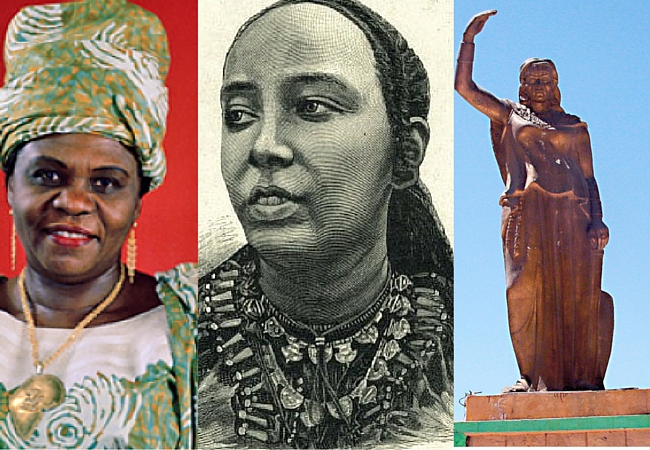There have been many great African women who during their lifetime, espoused a desire to see women treated fairly. They were Queens, Warriors, Politicians, Entrepreneurs, Artistes and so on. What they all had in common was the legacy of service and love for their community and commitment to the enhancement of the status of women. Feminism did not ‘arrive’ in Africa via the West. It has always been here! – Above Whispers.
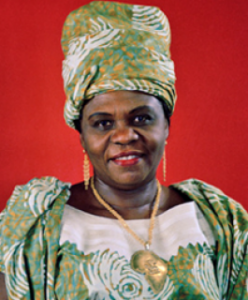
- Angie Elisabeth Brooks (Liberia): (August 24, 1928 – September 9, 2007) was a Liberian Diplomat and Jurist. She is notable for being the only African female President of the United Nations General Assembly. She was also the second woman from any nation to head the U.N.
In 1954 she became Liberia’s Permanent Representative to the United Nations, where much of her work involved the transformation of former colonial states into independent countries. In 1969, she was chosen as the President of the General Assembly and took office in 1970. She also served as Assistant Secretary of State of Liberia.Her tenure as Permanent Representative ended in 1977, when she was appointed an Associate Justice of the Supreme Court of Liberia. Nominated by President Tolbert on 4 May and taking office two days later, she was the first woman to serve on the Supreme Court of Liberia.
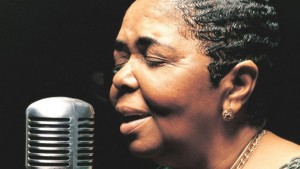
- Cesária Évora (Cape Verde): (27 August 1941 – 17 December 2011) was a Cape Verdean popular singer. Nicknamed the “Barefoot Diva” for performing without shoes, she was also known as the “Queen of Morna“. When she was seven years old her father, who was a part-time musician died, and at the age of ten she was placed in an orphanage, as her mother could not raise all six children. At the age of 16, she was persuaded by a friend to sing in a sailors’ tavern.
In the 1960s, she started singing on Portuguese cruise ships stopping at Mindelo as well as on the local radio. It was only in 1985 when at the invitation of Cape Verdean singer Bana she went to perform in Portugal. In Lisbon she was discovered by the producer José da Silva and invited to record in Paris. Évora’s international success came in 1988 with the release of her first commercial album La Diva Aux Pieds Nus, recorded in France. Prior to the release of the La Diva Aux Pieds Nus album, Cesaria recorded her first LP titled “Cesaria” in 1987. This Album was later released on CD in 1995 as Audiophile Legends.Her 1992 album Miss Perfumado sold over 300,000 copies worldwide. It included one of her most celebrated songs, “Sodade“.
Her 1995 album Cesária brought her broader international success and the first Grammy Award nomination.In 1997, she won KORA All African Music Awards in three categories: “Best Artist of West Africa”, “Best Album” and “Merit of the Jury”.In 2003, her album Voz d’Amor was awarded a Grammy in the World music category.
In 2006 in Italy Cesaria met Alberto Zeppieri (songwriter, journalist and record producer), who would dedicate to her “Capo Verde, terra d’amore” (www.capoverde-italia.it), taking care of all creative adaptations in Italian. Cesaria agreed to duet with Gianni Morandi, Gigi D’Alessio and Ron. The project, now in its fifth volume, gives visibility and raises funds for the UN World Food Programme, for which Cesaria was the Ambassador from 2003.
On 17 December 2011, aged 70, Évora died in São Vicente, Cape Verde, from respiratory failure and hypertension. A Spanish newspaper reported that 36 hours before her death she was still receiving people – and smoking – in her home in Mindelo, popular for always having its doors open.

- Yennega (Burkina Faso): was a legendary Princess, considered the mother of the Mossi people of Burkina Faso. She was a famous warrior whose son Ouedraogo founded the Mossi Kingdoms. Yennenga was the daughter of Nedega, an early 12th-century king of the Dagomba Kingdom in what is now northern Ghana. She was a beautiful and beloved Princess who from the age of 14, fought in battle for her father against the neighbouring Malinkés. Skilled with javelins, spears and bows, she was an excellent horsewoman and commanded her own battalion. Yennenga was such an important fighter that when she reached a marriageable age, her father refused to choose a husband for her or allow her to marry. To express her unhappiness to her father, Yennenga planted a field of wheat. When the crop grew, she let it rot. She explained to her father that that was how she felt, being unable to marry.[2] Nedega failed to be moved by this gesture and locked his daughter up.[4]
One of the king’s horsemen helped Yennenga, dressed as a man, escape on her stallion. Attacked by Malinkés, her companion was killed, and Yennenga was left alone. She continued to ride north. One night, when she was exhausted from crossing a river, Yennenga’s stallion took her into a forest. She met a solitary elephant hunter called Riale. When he saw through Yennenga’s disguise, they fell in love. Yennenga and Riale had a son they named Ouedraogo, which means “stallion” and is now a common name in Burkina Faso. Ouedraogo founded the Mossi Kingdom. Yennenga is considered by the Mossi to be the mother of their empire and many statues of her can be found in the capital city of Burkina Faso, Ouagadougou. A statue of a golden stallion, called the Étalon de Yennenga, is awarded as the first prize in the biennial Panafrican Film and Television Festival of Ouagadougou (FESPACO).The national football team is nicknamed “Les Étalons” (“the Stallions”) in reference to Yennenga’s stallion
-

statue of Dyhia in Algeria.
Photo: en.wikipedia.orgThe Kahine (Algeria): was a Berber Queen, religious and military leader who led indigenous resistance to Arab Islamic expansion in Northwest, Africa, the region then known as Numidia. She was born in the early 7th century and died around the end of the 7th century in modern-day Algeria. Her personal name is one of these variations: Daya,Dehiya, Dihya (ⴷⵉⵀⵢⴰ), Dahya or Damya (with Arabic spelling it is difficult to distinguish between these variants).Her title was cited by Arabic-language sources as al-Kāhina (the priestess soothsayer). This was the nickname used by her Muslim opponents because of her reputed ability to foresee the future. She was born in the early 7th century and may well have been of mixed descent: Berber Jews and Byzantine Christian, since one of her sons is described as a ‘Yunani’ or Greek. Dihya may have ruled as a Christian Queen but some Arab historians wrote that she was a Jewish “sorcerer”, and she was able to defeat the Arab Islamic invaders who retreated to Tripolitania. For five years she ruled a free Berber state from the Aures mountains to the oasis of Gadames (695-700 AD). But the Arabs, commanded by Musa bin Nusayr, returned with a strong army and defeated her. She fought at the El Djem Roman amphitheater but finally died around the end of the 7th century in modern-day Tunisia in a battle near Tabarka. Supposedly, Dihya had a passion for ornithology that shaped science and learning in early North Africa. Today, many look up to her for her great findings and independence. She shares the same homeland as the famous Saint Augustine.
In later centuries, Dihyā’s legend was used to bolster the claims of Berbers in al-Andalus against Arab claims of ethnic supremacy—in the early modern age, she was used by French colonials, Berber nationalists, Arab Nationalists, North African Jews, North African feminists, and Maghrebi nationalists alike for their own didactic purposes.
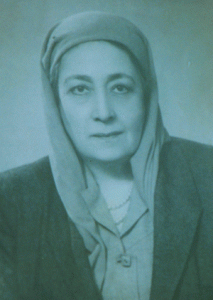
- Huda Shaarawi (Egypt): (June 23, 1879 – December 12, 1947) was a pioneering Egyptian feminist leader, nationalist, and founder of the Egyptian Feminist Union. Born into a wealthy family in Minya, she was the daughter of Muhammad Sultan, the first president of the Egyptian Representative Council. Sha`arawi spent her childhood and early adulthood secluded in an upper-class Egyptian Harem. At the age of thirteen, she was married to her cousin Ali Pasha Sha`arawi. According to Margaret Badran, a “subsequent separation from her husband gave her time for an extended formal education, as well as an unexpected taste of independence. “She was taught to read the Qur’an and received tutoring in Arabic, and Turkish, and Islamic subjects by female Muslim teachers in Cairo. Sha`arawi wrote poetry in both Arabic and French. Shaarawi later recounted her early life in her memoir Harem Years: The Memoirs of an Egyptian Feminist, 1879-1924.
At the time, women in Egypt were confined to the house or harem. As seen in all of her pictures, Hude is wearing a Hijab. Sha`arawi resented such restrictions on women’s movements, and started organizing lectures for women on topics of interest to them. This brought many women out of their homes and into public places for the first time. Sha`arawi even convinced them to help her establish a women’s welfare society to raise money for the poor women of Egypt. In 1910, Sha`arawi opened a school for girls where she focused on teaching academic subjects rather than practical skills such as midwifery.
After World War I, many women took part in political actions against the British rule. In 1919, Sha`arawi helped organize the largest women’s anti-British demonstration. In defiance of British orders to disperse, the women remained still for three hours in the hot sun.
Sha`arawi made a decision to stop wearing her veil in public after her husband’s death in 1922. Within a decade of Huda’s act of defiance, few women still chose to wear the veil. Her decision to unveil was part of a greater movement of women and was influenced by French born Egyptian feminist, Eugénie Le Brun, but it contrasted with some feminist thinkers like Malak Hifni Nasif. In 1923, Sha`arawi founded and became the first president of the Egyptian Feminist Union, after returning from the International Woman Suffrage Alliance Congress in Rome she removed her face veil in public for the first time, a signal event in the history of Egyptian feminism. Women who came to greet her were shocked at first then broke into applause and some of them removed their veils. She helped to organize Mubarrat Muhammad Ali, a women’s social service organization, in 1909 and the Union of Educated Egyptian Women in 1914, the year in which she traveled to Europe for the first time. She helped lead the first women’s street demonstration during the Egyptian Revolution of 1919, and was elected president of the Wafdist Women’s Central Committee.
She led Egyptian women pickets at the opening of Parliament in January 1924 and submitted a list of nationalist and feminist demands, which were ignored by the Wafdist government, whereupon she resigned from the Wafdist Women’s Central Committee. She continued to lead the Egyptian Feminist Union until her death, publishing the feminist magazine l’Egyptienne (and el-Masreyya), and representing Egypt at women’s congresses in Graz, Paris, Amsterdam, Berlin, Marseilles, Istanbul, Brussels, Budapest, Copenhagen, Interlaken, and Geneva. She advocated peace and disarmament. Even if only some of her demands were met during her lifetime, she laid the groundwork for later gains by Egyptian women and remains the symbolic standard-bearer for their liberation movement.
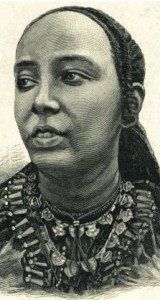
- Taytu Betul (Ethiopia): was an Empress Consort of the Ethiopian Empire (1889–1913) and the third wife of Emperor Menelek II of Ethiopia. She founded Addis Ababa, Ethiopia’s capital city. Taytu Betul (or Taitu) was born in or around 1851, the third of four children in an aristocratic Ethiopian family that was related to the Solomonic dynasty. Her father, Ras Betul Haile Maryam was less well known than her uncle Dejazmach Wube Haile Maryam, who was the ruler of much of Northern Ethiopia in the 1840s, and a rival of Emperor Tewodros II. Her father’s family were the ruling family of Semien province, claiming descent from Emperor Susenyos I. Her father is son of Ras Gugsa, a member of the powerful ruling family of Yejju, which was of Oromo origin and had converted to Christianity from Islam, and which had ruled as Regents for the powerless Emperors in Gondar during the Zemene Mesafint (“Era of the Princes”). After four failed marriages, Taytu Betul married King Menelek of Shewa, later Emperor Menelek II of Ethiopia.
Taytu is acknowledged to have wielded considerable political power as the wife of Menelik, both before and after they were crowned Emperor and Empress in 1889. She led the conservative faction at court that resisted the modernists and progressives who wanted to develop Ethiopia along western lines and bring modernity to the country. Deeply suspicious of European intentions towards Ethiopia, she was a key player in the conflict over the Treaty of Wuchale with Italy, in which the Italian version made Ethiopia an Italian protectorate, while the Amharic version did not do so. The Empress held a hard line against the Italians, and when talks eventually broke down, and Italy invaded the Empire from its Eritrean colony, she marched north with the Emperor and the Imperial Army, commanding a force of cannoneers at the historic Battle of Adwa which resulted in a humiliating defeat for Italy in March, 1896. This victory was the most significant of any African army battling European colonialism.Menelik, who often prevaricated and postponed unpleasant decisions with answering “Yes, tomorrow” (Ishi, nega), found it useful to have his wife be in a powerful enough position to say “Absolutely not” (Imbi) to people and issues he just didn’t want to personally offend or refuse. As a result, Empress Taytu was increasingly unpopular while Menelik remained very loved by one and all at court and beyond. When Menelik’s health began to decline around 1906, Taytu began to make decisions on his behalf, angering her rivals for power through her appointment of favorites and relatives to most of the positions of power and influence. Widely resented for her alleged Gonderine xenephobia and nepotism, the nobility of Shoa and Tigray, along with the Wollo relatives of the heir-to-the-throne, Lij Iyasu, conspired to remove her from state responsibility. In 1910, she was forced from power, and a regency under Ras Tessema Nadew took over. Instructed to limit herself to the care of her stricken husband, Taytu faded from the political scene. Taytu and Menelik did not have any children. Menelik died in 1913 and was succeeded by his grandson from a daughter of a previous liaison, Lij Iyasu. Taytu was banished to the old Palace at Entoto, next to the St. Mary’s church she had founded years before, and where her husband had been crowned Emperor.
While some believe Taytu may have played a part in the plot that eventually removed Emperor Iyasu V from the throne in 1916, replacing him with Empress Zauditu, the price for Zauditu’s elevation was a divorce from Taytu’s nephew Ras Gugsa Welle, who became governor of Begemder. Zauditu, Menelik II’s daughter by yet another previous marriage, had always been close to Empress Taytu and invited Taytu to live with her. Although Taytu declined she resumed advising rulers “in a modest way,” to quote Chris Prouty. Taytu lived out the next few years at the old palace next to the Entoto Maryam Church overlooking Addis Ababa. She requested permission to go to Gondar in November 1917 to end her days, but was refused; three months later she was dead. She is buried next to her husband at the Taeka Negest Ba’eta Le Mariam Monastery in Addis Ababa.
-
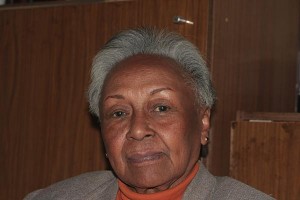
photo: rovahinger.blogspot.org Gisele Rabeshala (Madagascar): As a celebrated Malagasy woman politician of the twentieth century, Gisèle Rabesahala (1929-2011) devoted her life to her country’s independence, human rights and the freedom of peoples. The first Malagasy woman to be appointed minister (1977), she is regarded as a pioneer in Malagasy politics. Gisèle Rabesahala spent her childhood between France, Tunisia and what is now Mali, where her father was a non-commissioned officer in the French army. When he passed away in 1942, she returned to Madagascar with her family. The island was then a French colony.
As a child, Gisèle Rabesahala dreamed of becoming a nun. In her adolescence, she pictured herself as a “defender of the innocent”, which encouraged her to continue her education at a time when few Malagasy women were able to do so. Gisèle eventually earned her Preparatory Certificate and trained as a shorthand typist. At 17, she ventured into politics for the first time, as secretary to the Democratic Movement for Malagasy Renewal (MDRM), which campaigned for the country’s independence. She soon made a name for herself as a female politician of exceptional ability in a political world dominated by men. She was the first woman to be elected as a municipal councillor (1956) and political party leader (1958). She was also the first woman appointed minister in 1977.
Through her personality, her commitment and her exceptional career, Gisèle Rabesahala established herself, over the years, as a true pioneer and a major political force in Madagascar’s political history. At the international level, she ranks among those historical figures that are at the forefront of development, having worked for the freedom of the peoples of Madagascar, human rights, independence and the progress of humanity.
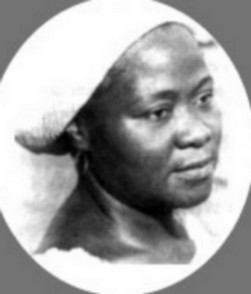
- Awa Keita ( Mali): was a midwife, activist and politician Malian , born in 1912 in Bamako (then French Sudan , now Mali ) and ded 7 May 1980 . She was a figure of the independence movement, syndicalism and feminism in Mali. Aoua Keïta was a political activist, fighting for the independence of French Sudan . From 1946 , she joined the Union African Democratic Sudanese-Rally (US-RDA) .
In 1950, she was transferred to Gao . She was given French citizenship the following year and was still in Gao during the 1951 elections, while all other militant officials of the US-RDA were transferred to the upcoming elections by the colonial administration supporting the opposing camp. Aoua Keita plays an important role in the victory of the party in the elections and transparency of the vote, not hesitating to publicly oppose the French officers who were trying to undermine the legitimate operation. Following the elections, She was mutated in turn for “disciplinary reasons” and sent to Bignona ( Casamance ) in Senegal , then Nara and finally to the Kati (her birthplace) , near Bamako. She founded the Movement Inter-feminine, in which she represented in 1957 Constituent Congress of the General Union of Workers of Black Africa .
A union activist, she was elected to the office of the Sudan Workers Trade Union in 1957 . His activism will result in its multiple mutations for disciplinary reasons. In 1958 , she entered the political bureau of the US-RDA is the only woman, and was appointed member of the Constitutional Committee of the Sudanese Republic . She was elected in 1959 member of the Federation of Mali , in Sikasso .The first Malian woman to be elected to this position. As such, she participated in drafting the constitution of the federation. She will play a political role, alongside Modibo Keita until the military coup of 1968. This included also the only woman to take part in 1962 in the development of the Malian Code of marriage and guardianship which was a breakthrough for the rights of women in Mali .
She represented Mali in July 1959 at the inaugural meeting of the Women’s Union of West Africa, in Bamako. It is the origin of the International Day of the African Woman (Jifa) , enacted by the UN and the OAU July 31, 1962. In 1962, she participated in the women’s conference in Dar es Salaam that gave birth to the Pan African Women’s Organisation. In 1975, she published Women in Africa. The life of aoua kéita told by herself. The military coup directed by Moussa Traore in 1968 marked the end of her political career. She left Mali and joined her second husband in the Republic of Congo in 1970. She returned to Mali in 1979 and died a year later at the age of 67.
-
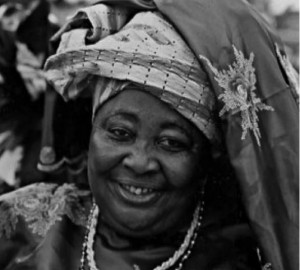
photo: openeyemag.com Gambo Sawaba (Nigeria): (1933-2001) was a Nigerian politician and activist who was a supporter of the Northern Elements Progressive Union during the Nigerian First Republic. She was one of the early members of NEPU in Zaria, then the party identified with the working class and poor and was manned by their main support base. Her political activities during the period earned her persecutions from both the colonial authorities and the native administrations which resulted in her being incarcerated for more than a dozen times. Sawaba was born to the family of Fatima and Isa Amarteifo. Her father was of Ghanaian origin while her mother was from Nupeland. Initially she was called Hajaratu but because she was born after a set of twins, she came to be known as Gambo. Her last name was supposedly given to her by Malam Gambo Sawaba, an outstanding member of NEPU in Zaria who was twice elected to the Zaria City Council.
Sawaba belonged to NEPU, a party she joined in Zaria when a local branch was formed and had to hold secretive meetings to shield the prying eyes of native authority officials especially the police from their activities. NEPU’s early message was to rally round the Talakawa in their fight against the colonists and also for their empowerment in a region dominated by the elites or Sarakuna. The Zaria branch then held meetings at the house of Mohammed Alangade, apart from stating their goals inline with the official policies of the party as declared in a doctrine called the Sawaba doctrine of freedom and liberation, the branch also pursued a anti-corruption campaign.
Sawaba, on registering with the party, was made the women’s leader for the Sabon Gari branch. For about three months, she left Zaria for Abeokuta to meet Funmilayo Kuti after reading about her exploits in Abeokuta in her struggle for womens right in tax matters and the brief exile of Oba Ladapo Ademola as a result.
Back in Zaria, during a political lecture, when the fear of political victimisation abound and many males held their tongues and chose not to speak out politically, she climbed unto the rostrum to speak, challenging her male colleagues. On that same day and a speaker, was a NEPU leader called Gambo Sawaba, it was he who gave her the name Sawabiya, meaning the redeemer, the name was later shortened to the masculine, Sawaba. She then continued with her rising political profile by going door to door to meet with women who were prevented from going to political activities because of the Purdah. She also attended NEPU classrooms taught by leaders such as Aminu Kano.
Her first political incident with the law occurred in Kano where she was sent to help NEPU with canvassing for women support. As soon as the reports of her activities reached the emir, she was arrested and tried by an Alkali court. She was convicted and sent to prison where a certain warden deemed to be a lesbian was accused of misusing her powers. Sawaba used some of her tricks to get the warden fired. After her release, she went public with the appalling prison conditions but that also got her and a reporter arrested again. She was later asked to leave Kano by the Emir. Through the first republic, she continued with her political activities sometimes suffering humiliating punishments from opposition’s thugs. She supported women’s right to vote and was elected leader of the women’s wing of NEPU. During the second republic, Sawaba was a member of the Great Nigeria Peoples Party and served as a deputy national chairman.
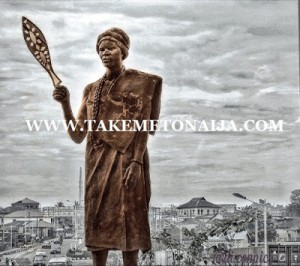
- Efunsetan Aniwura (Nigeria)
Efunsetan Aniwura- the Iyalode of Ibadan (Queen of women or women leader or minister of woman affairs) was a woman of Egba ancestry or origin. She became a very powerful and prosperous rich trader at Oja-Oba, Ibadan, in the region now known as Oyo State, Nigeria. Oral evidence reveals that she had three large farms in each of which no less than 100 slaves worked at a time. She had hundreds of slaves on her farms with many others at home. History had it that she owned over 2,000 slaves during her life time.
She was involved in trading with Europeans, taking goods from the hinterland to the coast and bringing imported goods; especially arms and ammunition, back to the hinterland. She extended credit facilities in the form of ammunition to the various Ibadan warriors when they were going on their military expeditions in 1872. She fielded hundreds of slave soldiers under her head slave, to join the Ibadan forces on their expedition to the Ekiti country. Even before then, she had been made the Iyalode of Ibadan in recognition of her contributions in this and other fields. As the leader of the women in Ibadan and a successful trader in arms, she was in a position to contribute to the debate on the issues of war and peace. Because of her spirit of entrepreneurship and the help rendered in oiling the military machine of Ibadan, Efunsetan Aniwura was a legend of many exploits and demonstrated the place of women in politics during the pre-colonial period. Efunsetan Aniwura’s woes arose from her participation in the war efforts. Oba Latoosa (the Yoruba Generalissimo) and his chiefs were becoming tardy in the payment of debt owed Efunsetan. She was a financier of the war efforts and a supplier of ammunition, she therefore stopped extending credit facilities to them. When Oba Latoosa set out for another war in 1874, she refused to give her usual support and kicked against the military expansion policy of Aare Latoosa which brought many towns under Ibadan jurisdiction (Osewa, 2005; Ilesanmi, 2010).
After returning from battle field, Latoosa brought three charges against Efunsetan:
- That she did not allow her forces to accompany him to war.
- That she never sent him supplies during the war campaign.
- That she did not come in person to meet him outside the town wall to congratulate him on his safe return. Latoosa, therefore, deposed Efunsetan Aniwura on 1st May 1874, replacing her with her lieutenant. Despite the fact that Efunsetan paid all the fines imposed on her, and sought the good will of prominent chiefs, through costly gifts; seeking to use them as emissaries of peace to request for forgiveness from Latoosa, these were all in vain.
The End of Efunsetan Aniwura
Efunsetan was aware of the fact that her family members or domestic slaves could be used against her, she spent nights and days running from her own shadow. She cooked her own food herself and changed her sleeping place nightly. However, on the night of June 30 1874, knowing where she slept, two slaves instructed by Kumiyilo entered the room from the ceiling and killed her by dashing out her brain. Latoosa then installed Kumiyilo as head of Efunsetan’s family (Osewa, 2005).
However, her natal family members from Egba sent an emissary to Ibadan, requesting for the circumstances which surrounded her mysterious death. Faced by insurrection and possible reprisal attacks from the Egba, Latoosa had Kumuyilo summoned for interrogation. Kumuyilo named three chiefs, who were Latoosa’s close aides in the conspiracy of her murder. The rest of the chiefs, did not want to disgrace Latoosa publicly, so they deposed Kumuyilo from headship of Efunsetan’s family and had the actual murderers executed on July 10, 1874 to placate the anger of her Kinsmen. The greatest injustice done to Efunsetan Aniwura happened decades after her death. The famous Yoruba playwright, Professor Akinwunmi Ishola immortalized Efunsetan in a fictionalized story which bore her name. In this play, which had stage and film adaptations, Efunsetan Aniwura is portrayed as a wicked, barren, grasping and insurbodinate woman, who is brought to justice by the ‘noble’ King Latoosa.

